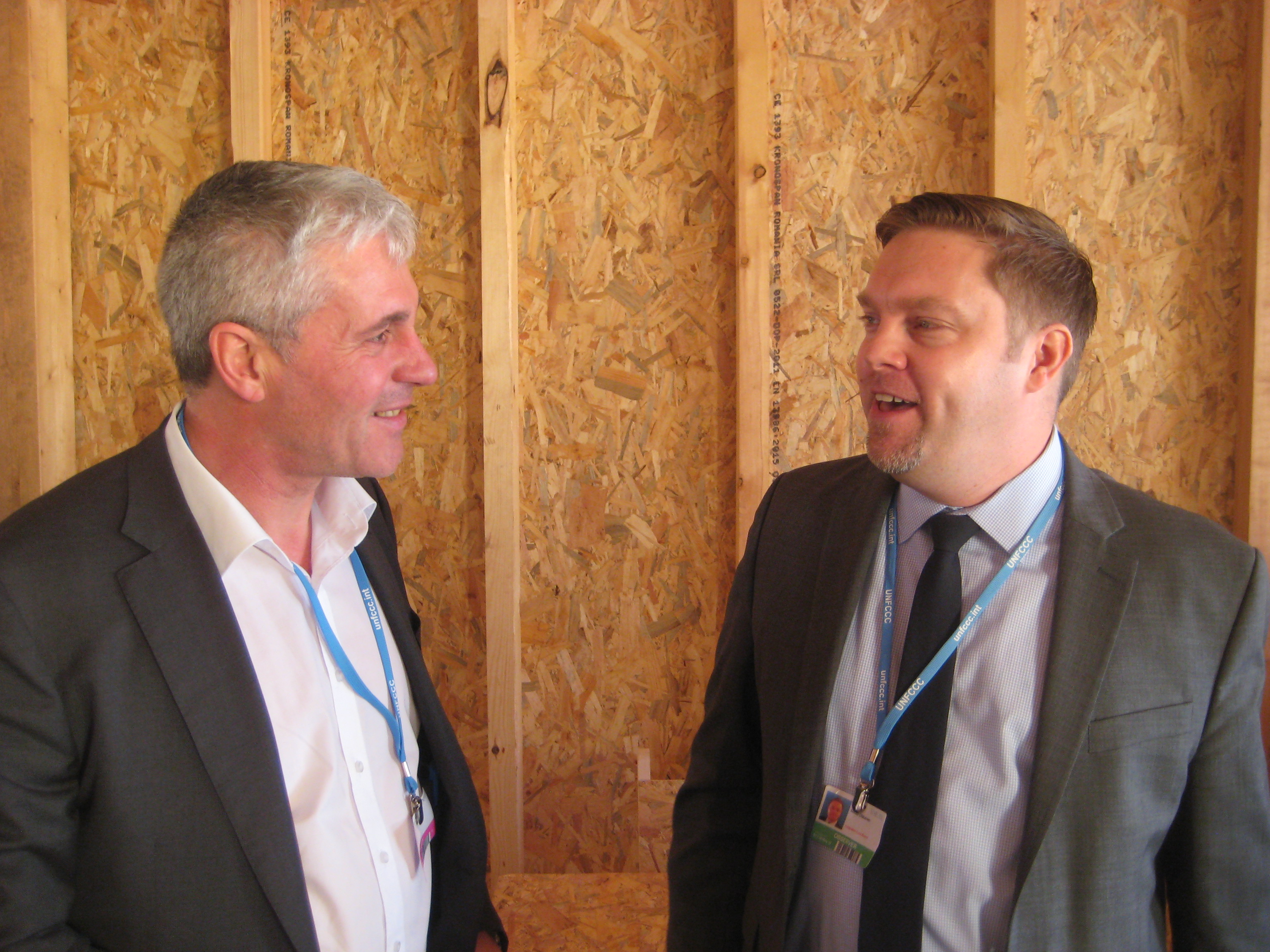Wallonia Comes Forward with US$3.5 Million Contribution to the Adaptation Fund
Pledge from Belgium’s Walloon Region Marks First Official Contribution for Fund at COP22 Climate Conference
Marrakech, Morocco (November 16, 2016) – The Walloon Region (Wallonia) in Belgium became the first official developed country government contributor this year for the Adaptation Fund at COP22 when it pledged a contribution of US$ 3.5 million (3.25 million Euros) for the Fund today.
The pledge will count towards the Fund’s US$ 80 million resource mobilization target for this year, leaving about US$ 76.5 million to be raised.
The move recognizes the high value the Adaptation Fund has in funding concrete, effective and localized projects to help the most vulnerable communities in developing countries adapt and build resilience to climate change. In 2013, the Adaptation Fund was the first international climate fund to receive pledges for contributions from sub-national governments, namely from regions of Belgium. The current pledge marks the third time the Walloon region has contributed to the Fund, following an initial contribution of US$ 0.27 million and a $US 1.1 million contribution last year. This year’s contribution triples Wallonia’s contribution from last year, and shows an upward trend and consistency in its support for the Fund. It expressed intention to contribute in coming years, as well.
“This is not a small donation for the Adaptation Fund and the continuity of funding is important. We are very grateful, and it will make a positive impact in reaching more vulnerable communities with urgently needed climate change adaptation solutions,” said Adaptation Fund Board Chair Naresh Sharma.
Belgium as part of the European Union is a signatory of the Paris Agreement, which calls for a balance of financing for adaptation and mitigation. Belgium also has a national adaptation strategy and regional adaptation plans, including one for Wallonia.
“Happy with the Walloon contribution of 3.25 million Euros to help adaptation to climate change in developing countries,” tweeted Paul Furlan, Wallonia’s Minister of Local Government, Cities, Housing and Energy.
The Adaptation Fund is widely supported by the developing countries it supports. Its projects focus on meeting the adaptation needs of vulnerable local communities, based on national and sub-national plans. Being rooted in the needs of the local stakeholders improves the expected effectiveness and sustainability of the projects.
It pioneered Direct Access, which provides developing countries the opportunity to access climate finance and develop projects directly though accredited National Implementing Entities (NIEs). The Fund currently has 25 NIEs, and other climate funds are now emulating its groundbreaking work in Direct Access. In total, the Fund has 43 implementing entities capable of designing and carrying out urgently needed adaptation projects throughout the world.
The Fund’s portfolio continues to grow, with 55 approved projects in 48 countries serving more than 3.7 million direct beneficiaries. It remains in high demand, receiving record amounts of requested funding for new project proposals the last two years and has a pipeline of projects under review totaling US$ 200 million.
An independent evaluation last year showed the Fund to be effective, efficient and relevant, as well as an innovative learning institution. Its environmental, social and gender policies have been prescient in promoting human rights, gender equality, biodiversity and the needs of vulnerable groups. The Fund’s alternative, streamlined accreditation process has also opened doors to climate finance for smaller states with little capacity to adapt to climate change, while its emerging Pilot Program for Regional Projects helps address climate change issues that cross borders.
Fund projects also have great potential to be replicated or scaled up, and several examples of this are already occurring in countries like Pakistan, Senegal and Morocco where early Adaptation Fund project support and accreditation catalyzed further investments from other funds such as the Green Climate Fund.
Wallonia’s new contribution to the Fund follows last year’s pledges from developed country governments totaling about US$ 75 million, which helped the Fund nearly reach its resource mobilization target of US$ 80 million in 2015, as well. Last year’s pledges were announced during COP21 in Paris and included contributions from Sweden, Germany, Italy and Wallonia.
“We thank Wallonia for being the first contributor in 2016 to officially announce its new commitment, and hope it will help lead to other countries coming forward,” said Adaptation Fund Interim Manager Mikko Ollikainen. “We like to have a broad base of support for the Fund. This is a significant contribution and is very much appreciated as it will help us reach more developing countries with effective adaptation projects.”
As another signal of the Fund’s effectiveness and swiftness in reaching beneficiaries in developing countries with flexible and localized projects, it was also included in the decisions last year adopting the Paris Agreement which stated the Fund may serve the Agreement subject to a process that is already underway. That process has continued during COP22 with the Conference of the Parties moving it forward last week, and the Ad Hoc Working Group on the Paris Agreement (APA) starting to undertake the necessary preparatory work. The APA discussions have begun and will continue at upcoming climate conferences next year.
“The Fund is already working towards the goals of the Paris Agreement, and we are fully committed to fulfilling our mandate in a way that is compatible with the Agreement,” added Ollikainen.
ABOUT the ADAPTATION FUND
Since 2010, the Adaptation Fund has committed US $357.5 million to support 55 concrete, localized climate adaptation and resilience projects in 48 countries, with more than 3.7 million direct beneficiaries.
Communications: Matthew Pueschel, mpueschel@adaptation-fund.org
Attachments
| Attachment | Type | Size |
|---|---|---|
| Press release November 16, 2016 | 251 KB |



